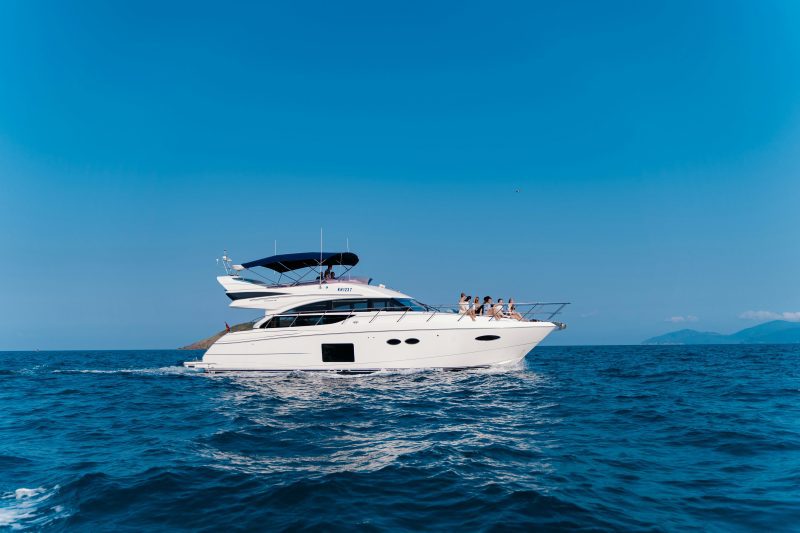Yacht Ownership in Asia – Practical Advice and Real Costs

Asia’s shoreline is rapidly becoming a magnet for yachting enthusiasts, drawn by lively marinas, inviting climates, and exclusive waterfront lifestyles. If you want to travel southeast Asia in style, a yacht is the best way to do it. If you think yacht costs might be prohibitive, keep reading!
For anyone looking to purchase a yacht, it’s vital to understand ongoing costs. Regular outlays—such as docking fees, crew wages, insurance, and scheduled upkeep—keep a yacht’s value intact and ensure it runs safely.
By blending long-standing maritime heritage with contemporary comfort, Asia makes yacht ownership an increasingly tempting choice for those who value leisure and status. However, having a solid grasp of these recurring expenses helps owners budget wisely and avoids unexpected, expensive repairs that can diminish the thrill of yachting.

Key Factors Shaping Yacht Costs for Maintenance
Size and usage both have a massive influence on maintenance expenses. Larger yachts, especially superyachts, often incur bigger bills because they require more materials and have more intricate components.
Frequent outings also mean heavier wear and tear, leading to extra repairs and potentially putting a strain on budgets.
Age and design are equally important. Older yachts usually need more frequent refits, and certain features—like complex layouts or specialized systems—can increase costs.
Newer, streamlined designs tend to be simpler and cheaper to keep in top condition.
Proper hull upkeep is crucial for longevity. Inspections, cleaning, and refinishing help ward off saltwater corrosion and marine growth, preserving hull strength and boosting fuel efficiency.
Meanwhile, regular servicing of engines and generators keeps everything running smoothly, averting small glitches before they become expensive repairs.
Yacht Costs – Typical Annual Expenditures

Crew Salaries, Insurance, and Operational Expenses
Crew wages are often the biggest line item, shifting greatly based on the yacht’s size and purpose. While smaller yachts may only need a handful of experts, larger ones usually have a full team: a captain earning $70,000 to $150,000, engineers on $45,000 to $70,000, deckhands at $30,000 to $45,000, and interior staff from $30,000 to $60,000.
Insurance forms another key expense, covering hull, liability, and crew-related claims. Premiums hinge on factors such as vessel age, size, and typical use, and adding or removing clauses will nudge costs up or down; seeking advice from marine insurance experts helps shape a plan that balances coverage with budget limits.
Everyday running expenses also pack a punch. Fuel alone can cost anywhere from $50,000 to $400,000 each year, docking fees can be $10,000 to $100,000, and utilities—including water, electricity, and waste management—add another $2,000 to $20,000.
Routine Maintenance and Repairs
Regular engine checks are essential for keeping your yacht safe and running smoothly at sea.
Consistent inspections of the engine and its components spot wear and tear before small faults escalate into big, expensive fixes.
This forward-thinking upkeep lowers the likelihood of sudden breakdowns that can hit your wallet hard.
It’s equally important to keep the yacht’s hull in good shape.
Routine hull cleaning guards against saltwater damage and unwanted marine growth, both of which reduce speed and hike up fuel usage.
Keeping the hull pristine keeps your yacht looking sharp and extends its life by protecting its core structure.
Alongside scheduled work, you’ll want to plan for unexpected hiccups.
Unforeseen repairs often cost more, especially if you need urgent assistance or particular parts.
Setting money aside for these surprise bills keeps your cruise plans on track and preserves your yacht’s overall worth.
Yacht Costs & Estimates by Size
Smaller Motor Yachts (50–90 ft)

Smaller motor yachts in the 50–90 ft bracket often call for about 10–15% of their purchase price each year.
This figure covers key running costs, including marina fees, insurance, and regular upkeep.
Marina fees can be steep, especially at popular coastal spots and during the busy season.
Insurance also makes up a large slice of the overall bill, since older or pricier yachts can push premiums higher.
Fuel is another major expense, covering both leisurely outings and longer journeys.
These combined costs require careful planning so that owners have enough set aside to keep their yacht in top shape and preserve its value.
Large Yachts and Superyachts (90 ft and Above)

Large yachts and superyachts call for an extensive team of experts, spanning navigation officers, engineers, and hospitality specialists. This staffing alone leads to a notably high payroll every year.
Their bigger dimensions also bring hefty technical demands, with comprehensive engine work and major refurbishments costing far more than on smaller boats.
Docking fees jump significantly too, as top-tier marinas can charge tens of thousands a year for yachts over 90 ft. Since prime berthing spots can be in short supply, these fees can climb even further.
Insurance premiums also spike, covering the heightened risks and large market values linked to these vessels. Altogether, running costs for superyachts increase well beyond what owners of smaller yachts typically pay.
Maintenance Approaches in Asia
Different parts of Asia have varying docking charges and marina space, and closely examining the real costs of owning a yacht in Asia can help prospective buyers to budget effectively. In thriving ports like Singapore, Hong Kong, and Bangkok, fees often jump up because berths are in short supply and everyone is vying for the best spots.
The lack of available slips can mean you’ll need to book early—especially if you want to avoid paying a premium during busy periods. Planning ahead helps prevent last-minute scrambles and hefty sums.
Asia’s unique weather patterns can also complicate upkeep. Seasonal monsoons and typhoons in the region prompt thorough checks and repairs beforehand, so that heavy rain and strong winds don’t cause serious damage.
By taking these precautions, owners can keep their yachts in good shape, staying a step ahead of unpredictable conditions and avoiding ballooning costs later on.
Key Insights into Yacht Costs for Prospective Owners
- Setting aside around 5% of your yacht’s value in an emergency fund can cushion unexpected repairs and maintenance costs.
- This reserve covers anything from minor technical faults to major weather-related damage.
- Regular checks of the hull and mechanics help maintain resale value and spot early signs of wear.
- By finding issues early, you avoid pricey fixes later on.
- Hiring well-qualified crew members is vital.
- They operate the yacht safely and manage routine upkeep, heading off potential breakdowns.
Together, consistent maintenance and skilled personnel keep the yacht running smoothly, preserve its appeal, and safeguard your finances in the long run.

